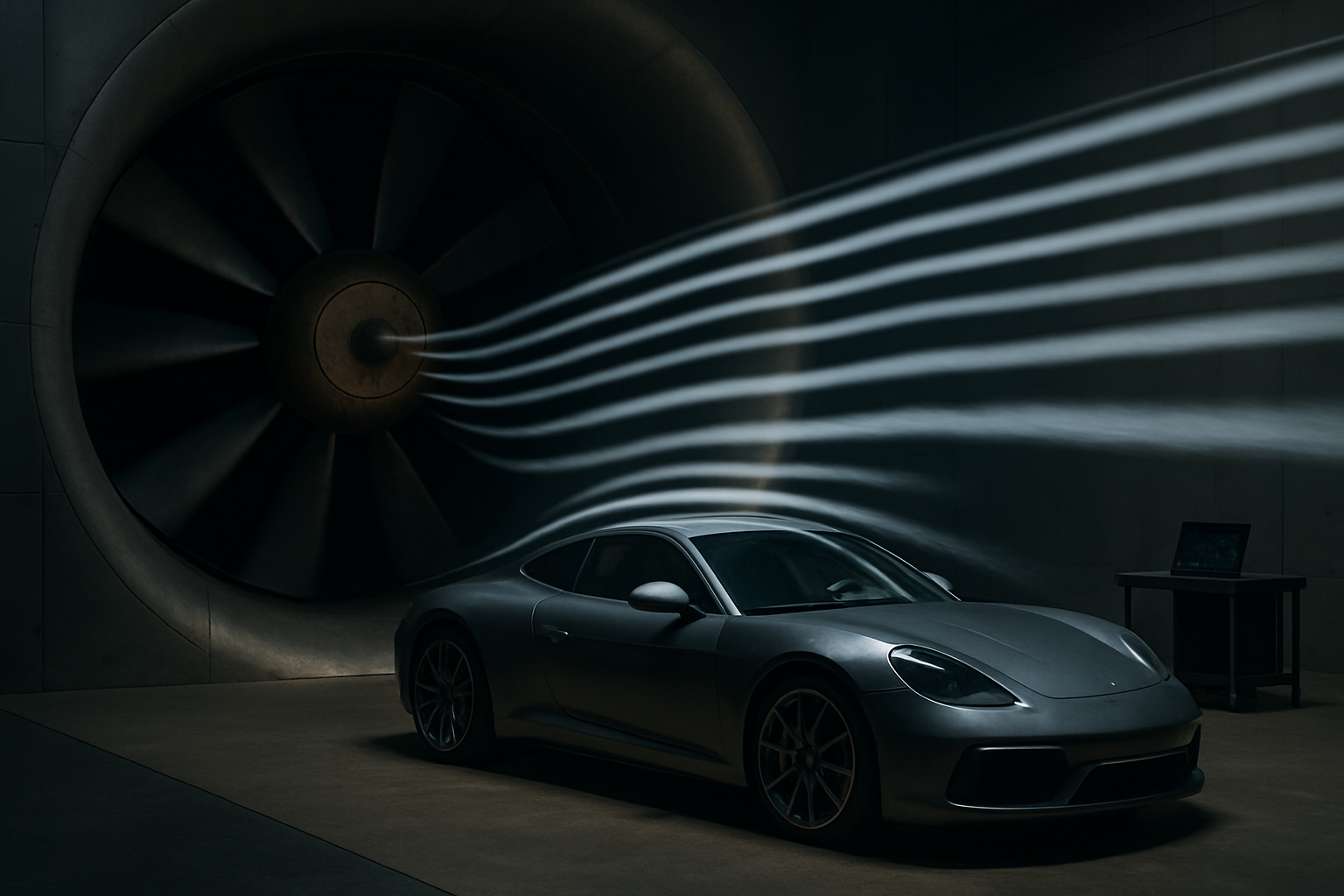The Hidden World of Automotive Wind Tunnels
Slicing through the air, a sleek prototype car sits motionless as powerful fans whip up a controlled storm around it. This is the hidden world of automotive wind tunnels, where the future of vehicle design takes shape. Far more than just tools for aerodynamic testing, these massive structures have become pivotal in shaping every aspect of modern automobiles, from fuel efficiency to stability and even the subtleties of cabin noise.

The Evolution of Automotive Wind Tunnels
Wind tunnels have come a long way since their inception in the early 20th century. Initially used primarily for aircraft design, these facilities found their way into automotive development in the 1930s. Early automotive wind tunnels were crude by today’s standards, often repurposed aircraft tunnels that provided only basic data on drag coefficients.
As the automotive industry grew more competitive and fuel efficiency became a pressing concern, wind tunnels evolved rapidly. The 1970s saw a boom in purpose-built automotive wind tunnels, equipped with moving ground planes to simulate real-world driving conditions more accurately. This innovation allowed engineers to study the complex interactions between a vehicle’s underbody and the road surface, leading to significant breakthroughs in design.
Today’s state-of-the-art wind tunnels are marvels of engineering. They incorporate advanced sensors, high-speed cameras, and sophisticated computer modeling to provide a wealth of data on every aspect of a vehicle’s performance in various wind conditions.
Beyond Aerodynamics: The Multi-Faceted Role of Wind Tunnels
While aerodynamics remains a primary focus, modern automotive wind tunnels serve a much broader purpose. These facilities have become integral to the development of nearly every aspect of vehicle design, from safety features to comfort and even aesthetics.
One critical area where wind tunnels excel is in the study of vehicle stability. By subjecting prototypes to carefully controlled crosswinds and gusts, engineers can fine-tune a vehicle’s handling characteristics, ensuring it remains stable and predictable in challenging weather conditions.
Wind tunnels also play a crucial role in optimizing cabin comfort. Engineers use these facilities to study air flow around windows and mirrors, minimizing wind noise and identifying potential areas of water accumulation during rainy conditions. This attention to detail results in quieter, more comfortable rides for passengers.
The Art and Science of Scale Model Testing
While full-scale testing is invaluable, many automotive companies also rely heavily on scale model testing in wind tunnels. This approach offers several advantages, including lower costs and greater flexibility in the early stages of design.
Scale model testing is a delicate art, requiring meticulous attention to detail to ensure accurate results. Engineers must carefully consider factors such as surface finish, wheel rotation, and even the miniaturization of cooling system intakes to create models that behave like their full-scale counterparts in the wind tunnel.
Advanced computer modeling techniques have enhanced the effectiveness of scale testing, allowing engineers to extrapolate data from small-scale tests to predict full-scale performance with remarkable accuracy. This hybrid approach of physical testing and digital simulation has revolutionized the vehicle development process, dramatically reducing time-to-market for new models.
Wind Tunnels and the Racing Edge
In the high-stakes world of motorsports, wind tunnels have become indispensable tools for gaining a competitive edge. Formula 1 teams, in particular, invest heavily in wind tunnel testing, often operating their own facilities or partnering with specialized aerodynamics labs.
Racing wind tunnels push the boundaries of what’s possible, incorporating features like yaw tables that can simulate cornering conditions and sophisticated particle image velocimetry systems to visualize air flow in unprecedented detail. The insights gained from these advanced facilities often trickle down to consumer vehicles, improving performance and efficiency across the board.
However, the use of wind tunnels in racing is not without controversy. Many motorsports governing bodies have implemented strict regulations on wind tunnel usage to control costs and level the playing field between teams with varying resources.
The Future of Wind Tunnel Technology
As automotive technology continues to evolve, so too do the wind tunnels that shape it. The latest developments in wind tunnel technology focus on creating ever more realistic testing environments and expanding the range of conditions that can be simulated.
One exciting area of innovation is the integration of virtual reality and augmented reality technologies into wind tunnel testing. These tools allow engineers to visualize air flow patterns in real-time, overlaying complex data onto physical prototypes for immediate analysis and adjustment.
Another frontier is the development of environmental wind tunnels capable of simulating a wide range of weather conditions, from scorching desert heat to frigid arctic temperatures. These advanced facilities enable manufacturers to test vehicles in extreme conditions without the need for costly and time-consuming real-world expeditions.
As we look to the future, the role of wind tunnels in automotive development shows no signs of diminishing. From shaping the sleek lines of tomorrow’s sports cars to fine-tuning the efficiency of family sedans, these remarkable facilities will continue to play a crucial role in pushing the boundaries of what’s possible in automotive design and performance.
The hidden world of automotive wind tunnels may be invisible to most consumers, but its impact is felt every time we slide behind the wheel of a modern vehicle. As technology advances and environmental concerns drive the need for ever more efficient transportation, these cutting-edge facilities will remain at the forefront of automotive innovation, shaping the cars of tomorrow in the swirling currents of carefully controlled air.





